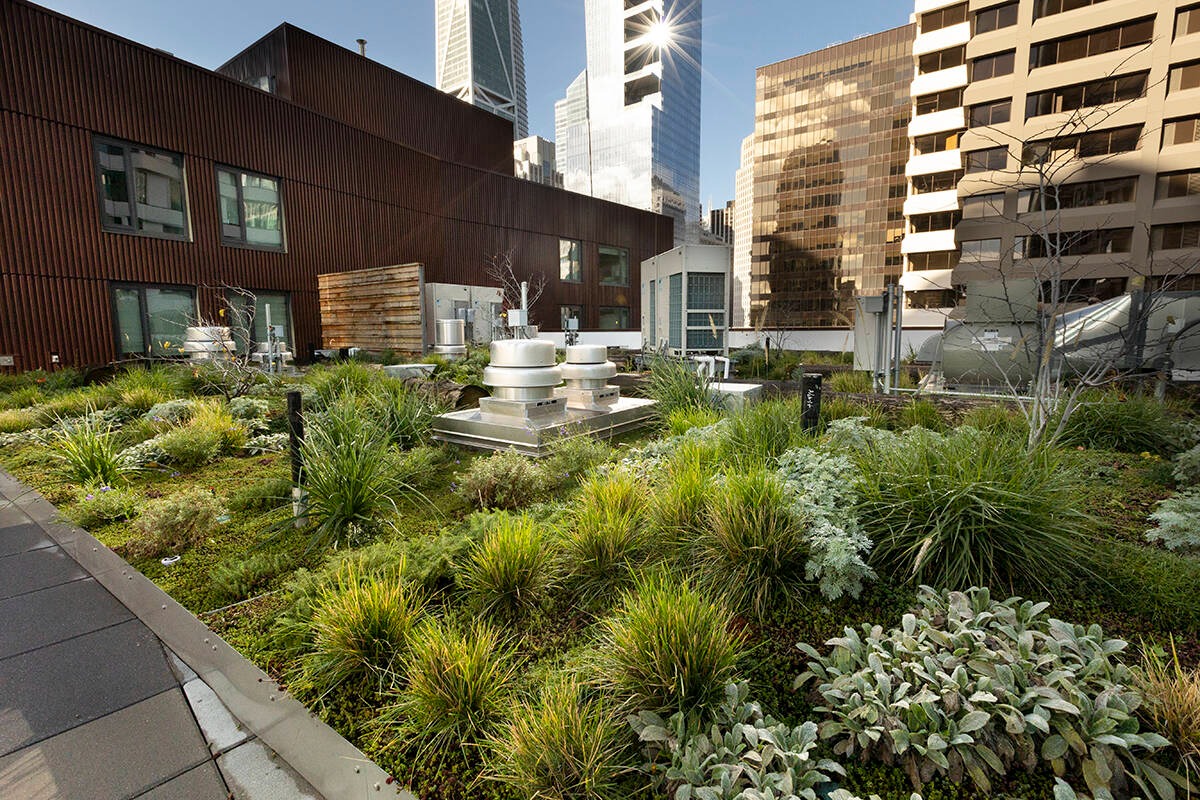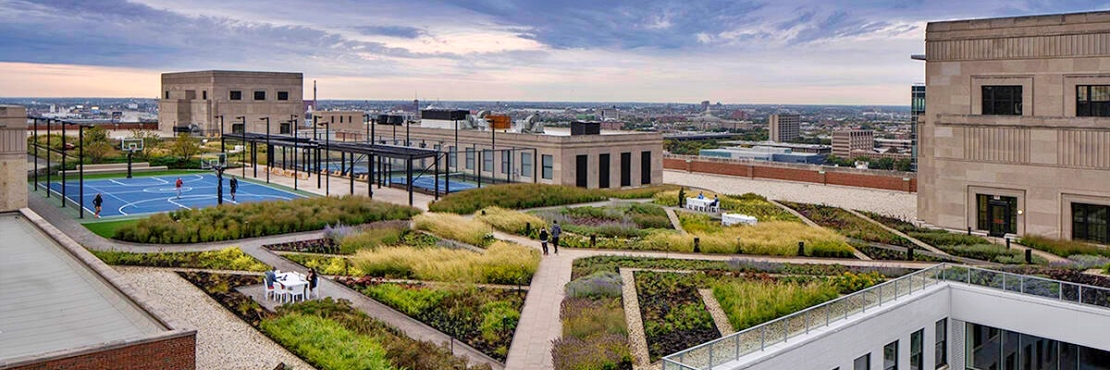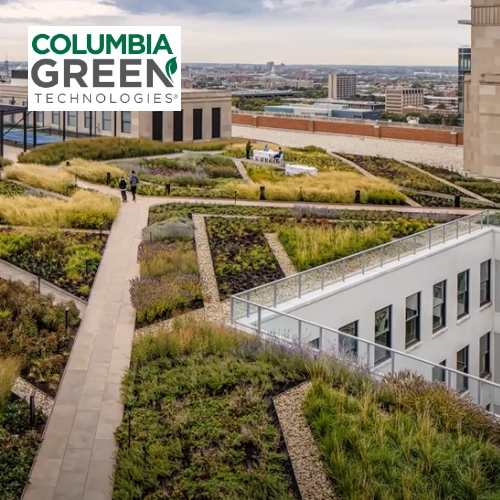Jessica Wolfrom of San Francisco Examiner writes:
As cities work to slash emissions and fight climate change, nature-based solutions provide myriad benefits
Every time it rains, Vanessa Keitges sees a missed opportunity.
Instead of being captured, that water bounces off buildings, rushes over impermeable surfaces, washes into storm drains and, ultimately, out to the ocean. That’s a precious resource lost in a drought-stricken state like California. On the flip side, as storms intensify in a warming world, cities with century-old sewage systems like San Francisco stand to be overwhelmed by flooding.
Keitges, CEO of Columbia Green Technologies, may have a solution to both problems.
“We’ve obviously been building our products around helping cities and building owners manage stormwater and build buildings for the environment. But post-COVID architecture is now all about the people.”
Vanessa Keitges
CEO of Columbia Green Technologies
She wants to transform The City’s rain-slicked rooftops into green space. Her Portland-based company manufactures living roofs – or a vegetative layer grown on top of rooftops – filling otherwise underutilized urban spaces with water-thirsty plants called sedum that can absorb stormwater while also providing an outdoor oasis for people.
“We’ve obviously been building our products around helping cities and building owners manage stormwater and build buildings for the environment,” she said. “But post-COVID architecture is now all about the people.”
As cities work to slash emissions and fight climate change, nature-based solutions like living rooftops and walls, which can increase biodiversity, reduce energy usage, mitigate the “heat island effect” and cut greenhouse gas emissions by insulating buildings and lowering air conditioning demand, are surging in popularity.
“Everyone in a hotel, condo office or apartment – they want to know, how do I get access to air, light and nature?” said Keitges. “And, in fact, if you’re not doing this, you’re not going to be competitive as a building owner in the 21st century.”
Columbia Green Technologies has installed more than 2,500 green roofs across the country to date, including on New York’s Chrysler Building, Chicago’s Tribune Tower and Amazon’s Seattle headquarters. Keitges argues it’s cheaper and easier to plant a garden on a rooftop than it is to replace a maze of aging infrastructure and pipelines under city streets. But, she said, San Francisco, whose buildings contribute over 40% of The City’s total emissions, is behind the curve.

A lush living roof thrives at MIRA SF condominiums in the South of Market. (Craig Lee/The Examiner)
“It’s interesting because California talks about green and green building and green infrastructure,” she said. “But we find the other cities have just taken this and led with it.”
 Greenroofs.comConnecting the Planet + Living Architecture
Greenroofs.comConnecting the Planet + Living Architecture









